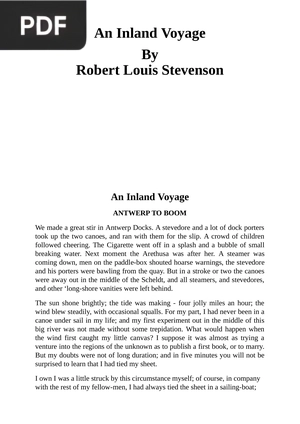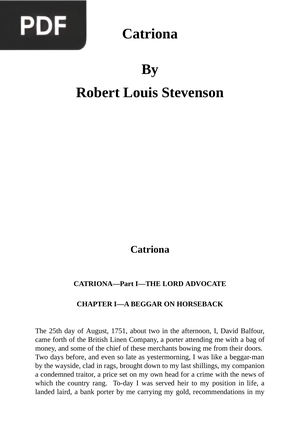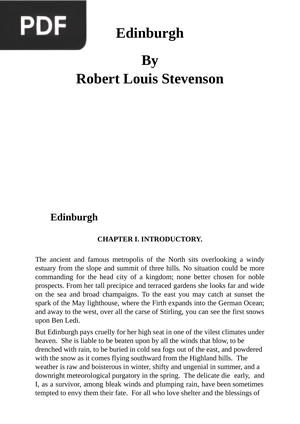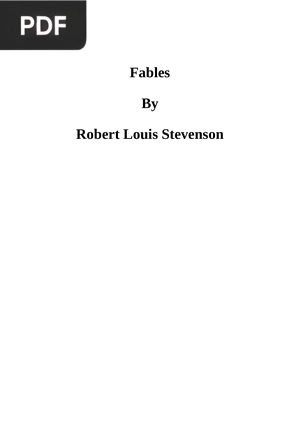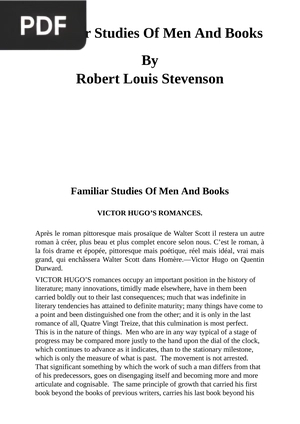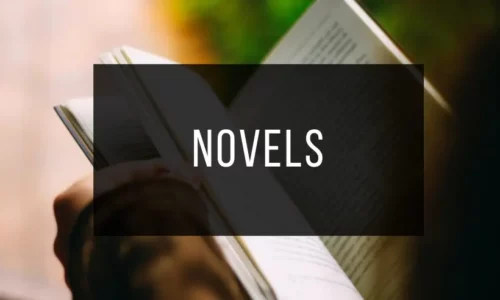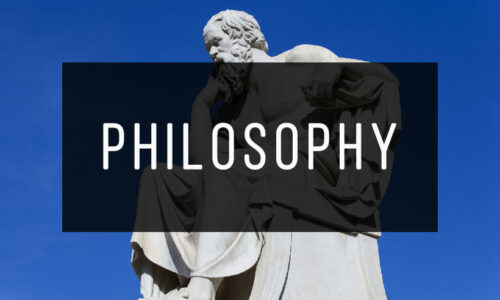Essays in The Art of Writing
Author: Robert Louis Stevenson
*Wait a few seconds for the document to load, the time may vary depending on your internet connection. If you prefer, you can download the file by clicking on the link below.
Information
Description: <p><strong>Essays in The Art of Writing</strong>, as the name suggests, this is a series of essays from 1905 in which Stevenson reveals the processes he employs when writing, also reviews the elements of poetry and prose, and what distinguishes the two.</p> <p>He also takes the reader inside his creative process, and explains what he believes it takes to be an accomplished storyteller. Among the essays included is "Books Which Have Influenced Me", where the reader can discover how Stevenson's thinking was shaped by some important authors.</p> <p>Likewise, it includes essays on two of his own books, one of which deals with the birth of Treasure Island, which began as a map he drew of an imaginary island. Stevenson used this map as the basis for developing the story of this book, an adventure tale that has undoubtedly influenced many later pirate stories.</p>
Pages: 42
Megabytes: 0.29 MB
This may interest you
An Inland Voyage
Extension: PDF | 71 pages
<p><strong>An Inland Voyage</strong> is a travelogue published in 1878 about a canoe trip Stevenson took when he was a young man of 26. He made this trip in the fall of 1876 and it took place in France and Belgium, mainly along the Oise River. The itinerary he followed has become a popular route that travelers often replicate.</p> <p>At that time, outdoor recreational travel was unusual, so when he reached a village with his canoe, the inhabitants would come out on the banks to greet him and encourage him to return soon.</p> <p>While in Belgium, he passed through very industrial areas, which was not very scenic or pleasant, but then he went by rail to France, starting in Maubeuge and ending in Pontoise, near the Seine.</p>
Catriona
Extension: PDF | 208 pages
<p><strong>Catriona</strong> is an 1893 novel that continues the story of Kidnapped (1886); in fact, it begins as the latter ends, at 2 o'clock in the afternoon of August 25, 1751, in front of the British Linen Company in Edinburgh, Scotland. Like its predecessor, it has as its protagonist the hero David Balfour.</p> <p>The first part of the novel narrates David's attempts to get justice for James Stewart, who has been arrested and accused of complicity in a murder. But after some events he is kidnapped again and confined on an island until the trial ends and James is sentenced to death.</p> <p>The other part tells us when David meets and falls in love with Catriona MacGregor Drummond, with whom he travels to Holland and takes her under his protection. The two become close friends, but a series of misunderstandings begin that end up separating them, although later they manage to meet again.</p>
Edinburgh
Extension: PDF | 41 pages
<p><strong>Edinburgh</strong> is a non-fiction travel book first published in December 1878, which began as a series of articles that appeared in The Portfolio magazine. It is divided into ten chapters and serves as a guide, memoir, and compilation of the social history of the city.</p> <p>It consists of an introduction to each area of the city, information about its history and its most famous buildings. It also contains a series of essays describing different areas such as: the Old Town, Parliament Close, the New Town, the villas in Morningside, Calton Hill and the Pentland Hills.</p> <p>In this book Stevenson has no qualms about giving a frank description of the city, including details of its darker aspects and some of its inhabitants, such as Deacon Brodie, whose double life served as inspiration for The Strange Case of Doctor Jekyll and Mr. Hyde.</p>
Fables
Extension: PDF | 36 pages
<p>The <strong>fable</strong> is a literary art of great appeal to Stevenson, so over the years he devoted himself to putting together a collection of Fables that were later published in 1896. This book consists of 20 peculiar tales that can be both funny and amusing as well as creepy.</p> <p>Among the titles we can mention: The Poor Thing, The Citizen and the Traveller, The Sick Man and the Fireman, The Distinguished Stranger, The Devil and the Innkeeper, The Touchstone, The Two Matches, The Reader. All of them are true masterpieces of art and wit that should be better known than they are.</p> <p>This collection is very varied, the reader will find very short stories of barely 2 pages and others much longer; which have among their characters common people, kings and princesses, wise women, and animals.</p>
Familiar Studies of Men and Books
Extension: PDF | 167 pages
<p><strong>Familiar Studies of Men and Books</strong> is a series of "informal" or "conversational" essays from 1882, in which Stevenson expounds his opinion on the works of nine great writers in the manner of a literary critic. Some of the authors are: Victor Hugo, Walt Whitman, Robert Burns, François Villon, Yoshida-Torajiro and Samuel Pepys.</p> <p>In addition, in the preface Stevenson performs a self-evaluation of his own essays, highlighting how his opinions have changed since the time they were written.</p> <p>Don't miss the opportunity to read this critical study that explores the life and work of nine writers from around the world, including a moral assessment of them. It will surely be an excellent gateway for you to get to know their works if you haven't had the opportunity to read them yet.</p>


